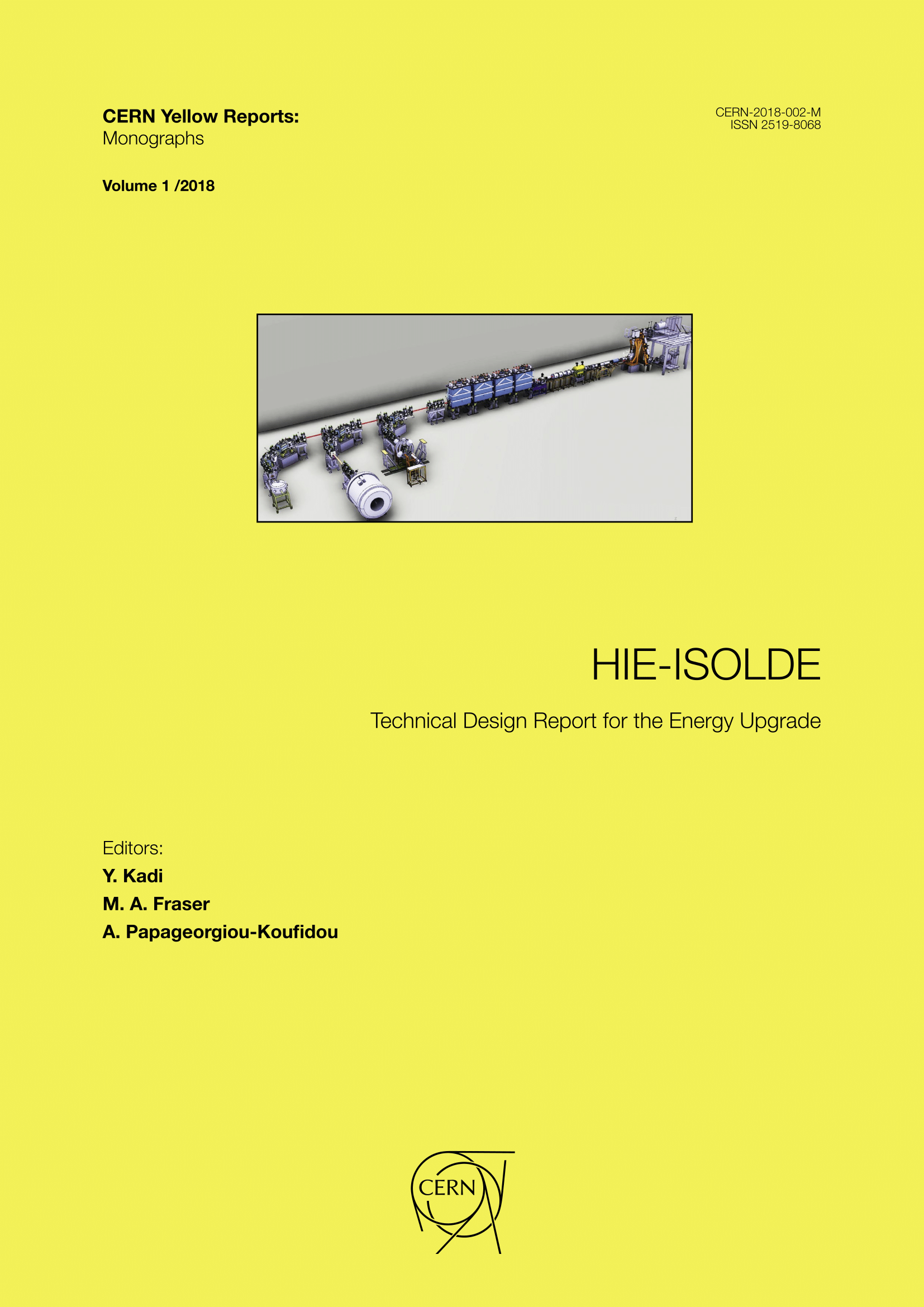Vol. 1 (2018): HIE-ISOLDE : Technical Design Report for the Energy Upgrade

edited by Y. Kadi, M. A. Fraser, A. Papageorgiou-Koufidou
CERN-2018-002-M, 978-92-9083-492-2 (paperback), 978-92-9083-493-9 (PDF)
The Isotope mass Separator On-Line facility (ISOLDE) at CERN occupies a leading position in the field of radioactive ion beams research, as it can produce the largest range of isotopes worldwide —over 1000 isotopes of more than 70 elements. HIE-ISOLDE (High Energy and Intensity – ISOLDE) is an upgrade that aims to increase the facility’s energy and intensity reach, opening the way to new opportunities in multiple fields of physics: nuclear and atomic physics, astrophysics and fundamental interactions. This technical design report presents the HIE-ISOLDE energy upgrade as built. The report is divided in six parts. The first details the motivation behind the project, as well as previous experiences with post-accelerated beams at the facility. The second part presents the design of the new linear accelerator and its components, including cryomodules, superconducting cavities and solenoids, while the third focuses on beam dynamics. General services and systems are presented in the fourth part, while the fifth and sixth concern safety procedures and commissioning respectively.
CERN-2018-002-M, 978-92-9083-492-2 (paperback), 978-92-9083-493-9 (PDF)
The Isotope mass Separator On-Line facility (ISOLDE) at CERN occupies a leading position in the field of radioactive ion beams research, as it can produce the largest range of isotopes worldwide —over 1000 isotopes of more than 70 elements. HIE-ISOLDE (High Energy and Intensity – ISOLDE) is an upgrade that aims to increase the facility’s energy and intensity reach, opening the way to new opportunities in multiple fields of physics: nuclear and atomic physics, astrophysics and fundamental interactions. This technical design report presents the HIE-ISOLDE energy upgrade as built. The report is divided in six parts. The first details the motivation behind the project, as well as previous experiences with post-accelerated beams at the facility. The second part presents the design of the new linear accelerator and its components, including cryomodules, superconducting cavities and solenoids, while the third focuses on beam dynamics. General services and systems are presented in the fourth part, while the fifth and sixth concern safety procedures and commissioning respectively.
